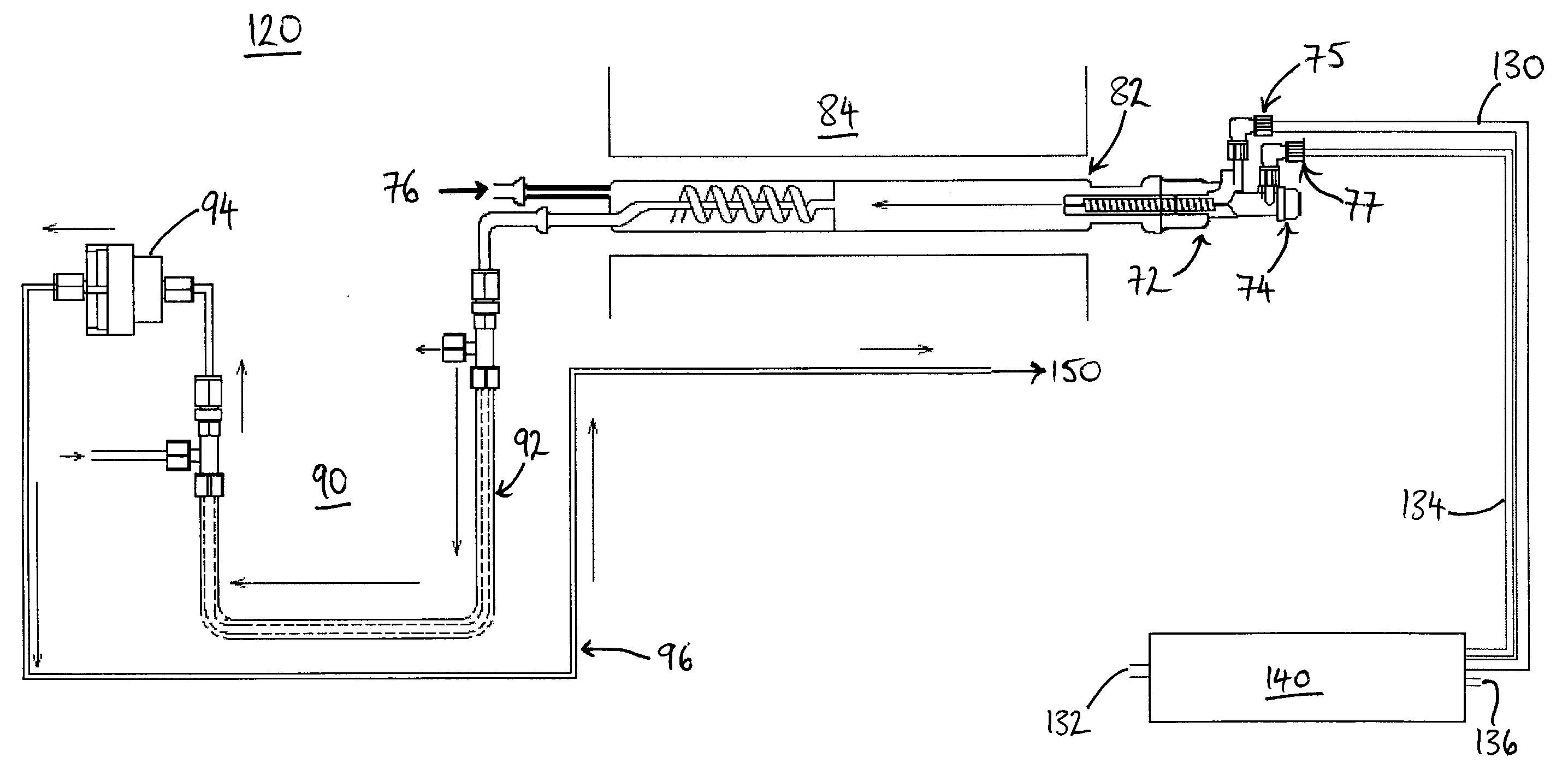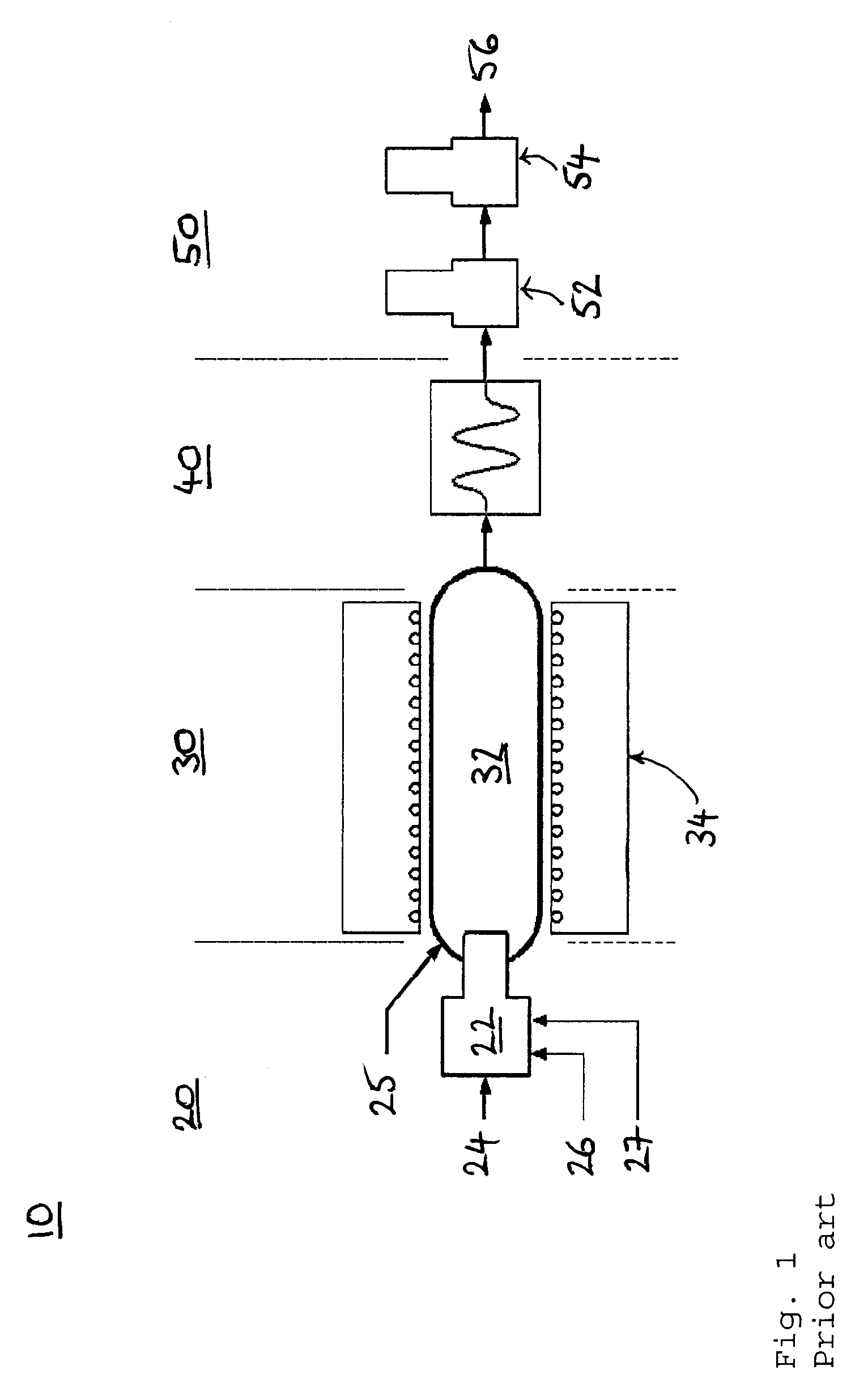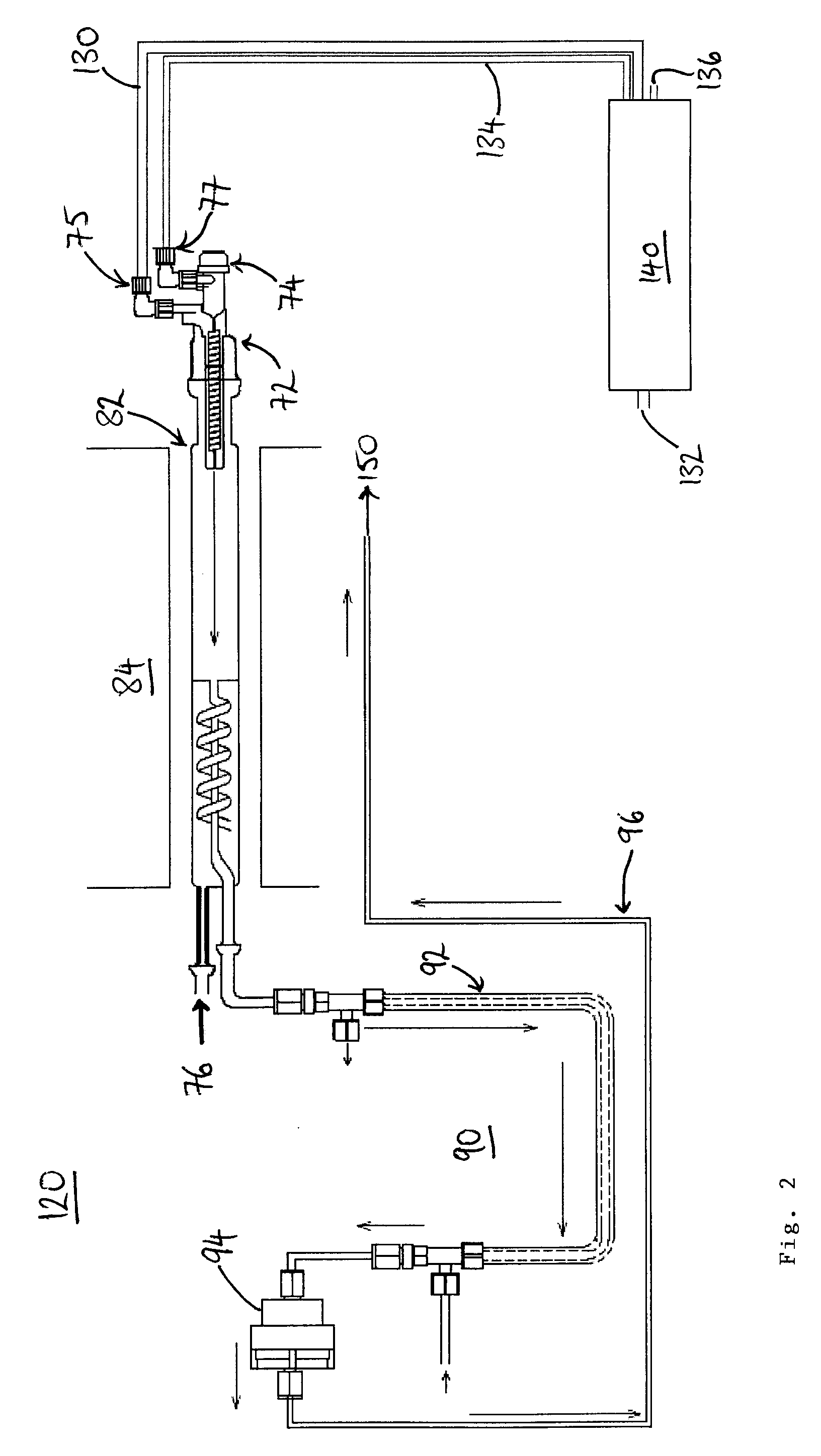Apparatus and method for generating nitrogen oxides
a nitrogen oxide and apparatus technology, applied in chemical methods analysis, instruments, material heat development, etc., can solve the problems of not consistently providing accurate measurements from sample to sample, and not providing relevant teaching in combustion analysis, so as to improve the yield of nox, and increase the yield of sulphur dioxide. the effect of substantial consistency
- Summary
- Abstract
- Description
- Claims
- Application Information
AI Technical Summary
Benefits of technology
Problems solved by technology
Method used
Image
Examples
Embodiment Construction
[0044]Referring to FIG. 2, there is shown a schematic layout of a combustion analyzer 120, in accordance with one embodiment of the invention. The combustion analyzer 120 has a sample introduction apparatus 72, which includes a sample supply inlet 74, an oxygen supply inlet 75, and a carrier gas supply inlet 77. The sample introduction apparatus 72 is connected to a combustion chamber 82, which is heated by a heater 84. The combustion chamber 82 is divided into two compartments, the second of which being a turbo compartment and having a further oxygen supply inlet 76, to promote complete combustion of a sample.
[0045]Combustion products formed in the combustion chamber 82 pass through a conditioning stage 90, before detection. In this example, the conditioning stage includes a dryer 92, which removes water from the combustion products, the water being entrained by a dry gas flow in the opposite direction to the combustion products, the dry gas flow flowing through an outer tube of th...
PUM
| Property | Measurement | Unit |
|---|---|---|
| temperature | aaaaa | aaaaa |
| temperature | aaaaa | aaaaa |
| temperature | aaaaa | aaaaa |
Abstract
Description
Claims
Application Information
 Login to View More
Login to View More - R&D
- Intellectual Property
- Life Sciences
- Materials
- Tech Scout
- Unparalleled Data Quality
- Higher Quality Content
- 60% Fewer Hallucinations
Browse by: Latest US Patents, China's latest patents, Technical Efficacy Thesaurus, Application Domain, Technology Topic, Popular Technical Reports.
© 2025 PatSnap. All rights reserved.Legal|Privacy policy|Modern Slavery Act Transparency Statement|Sitemap|About US| Contact US: help@patsnap.com



